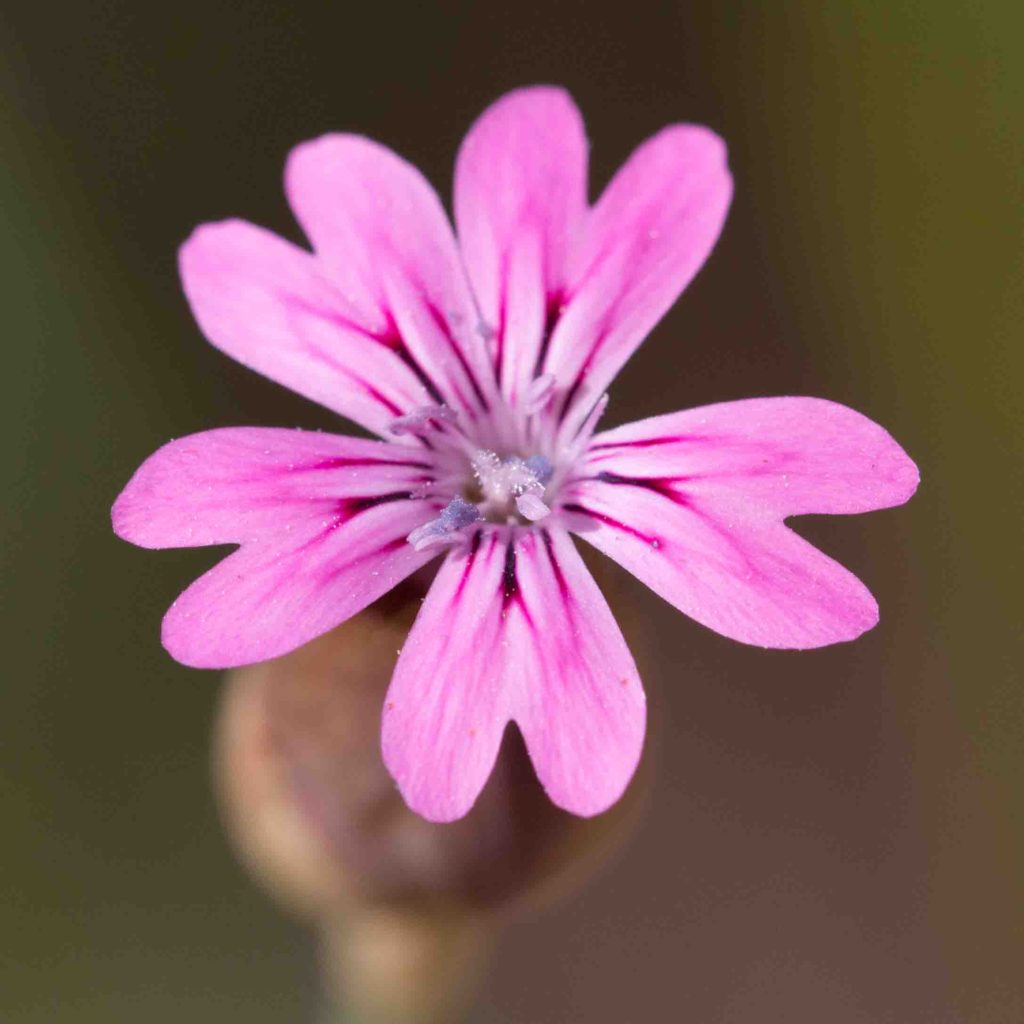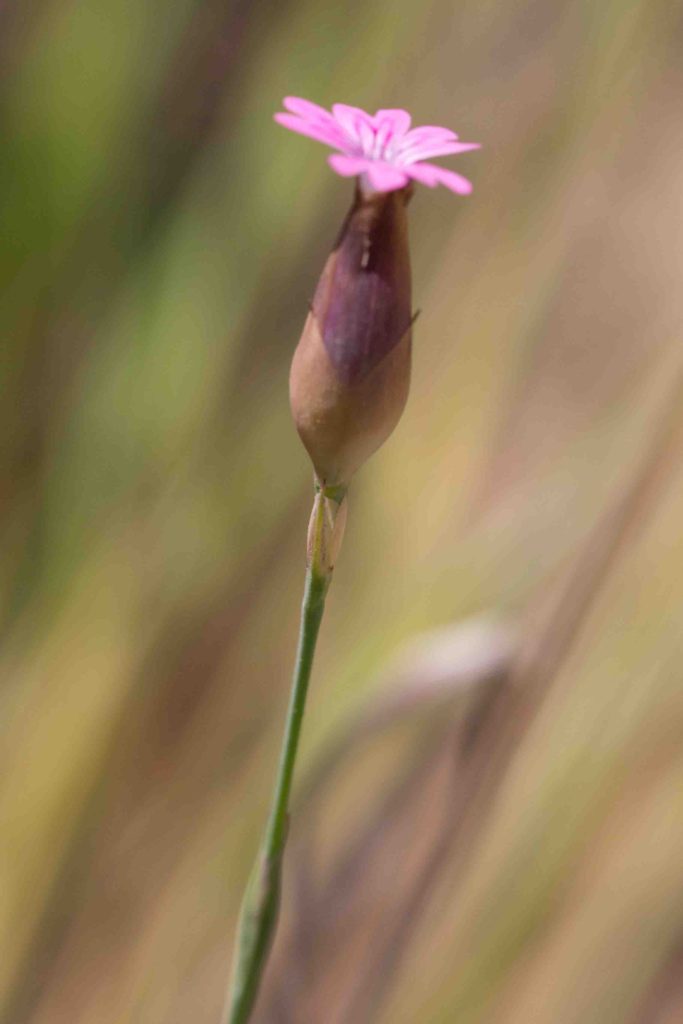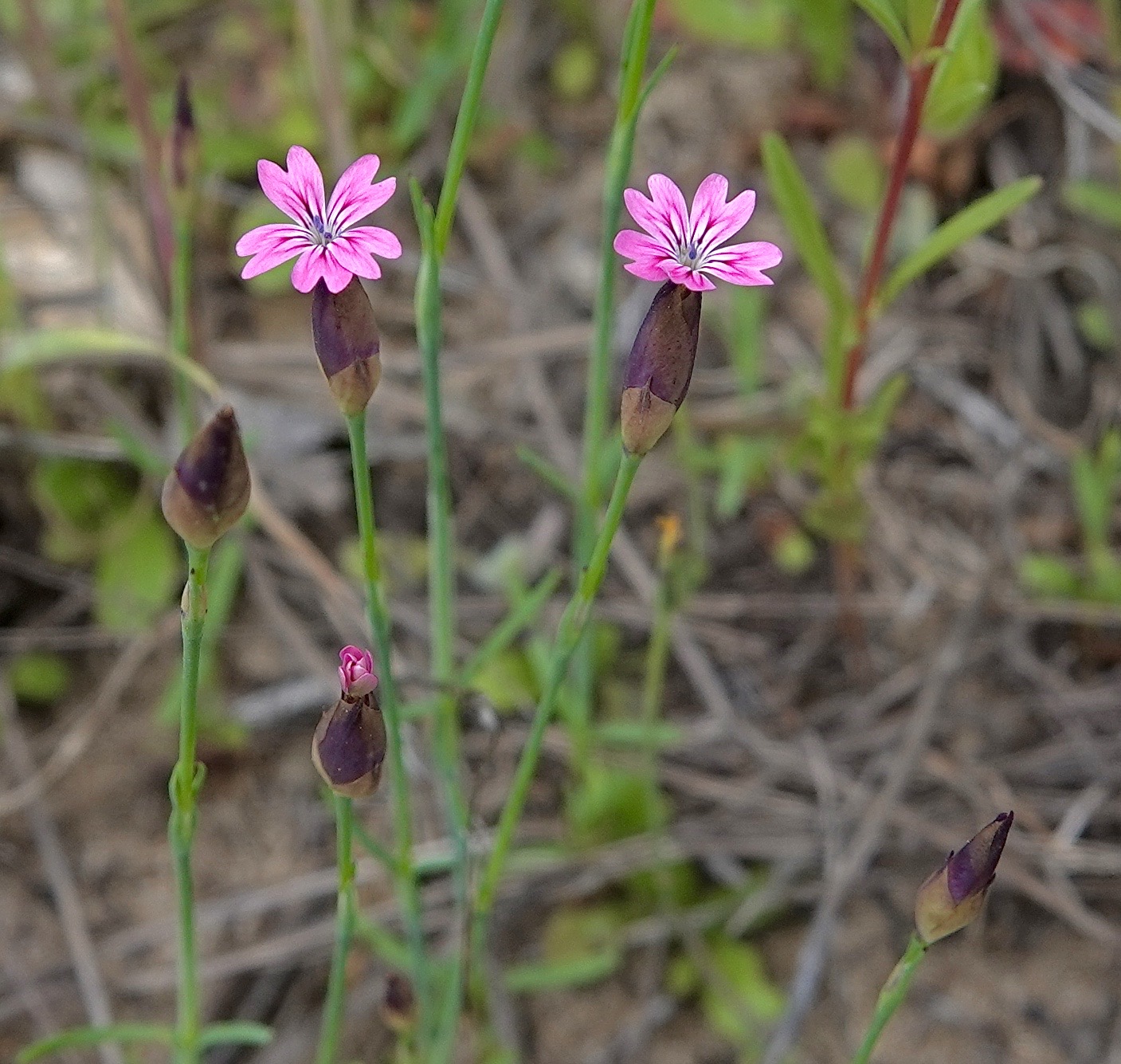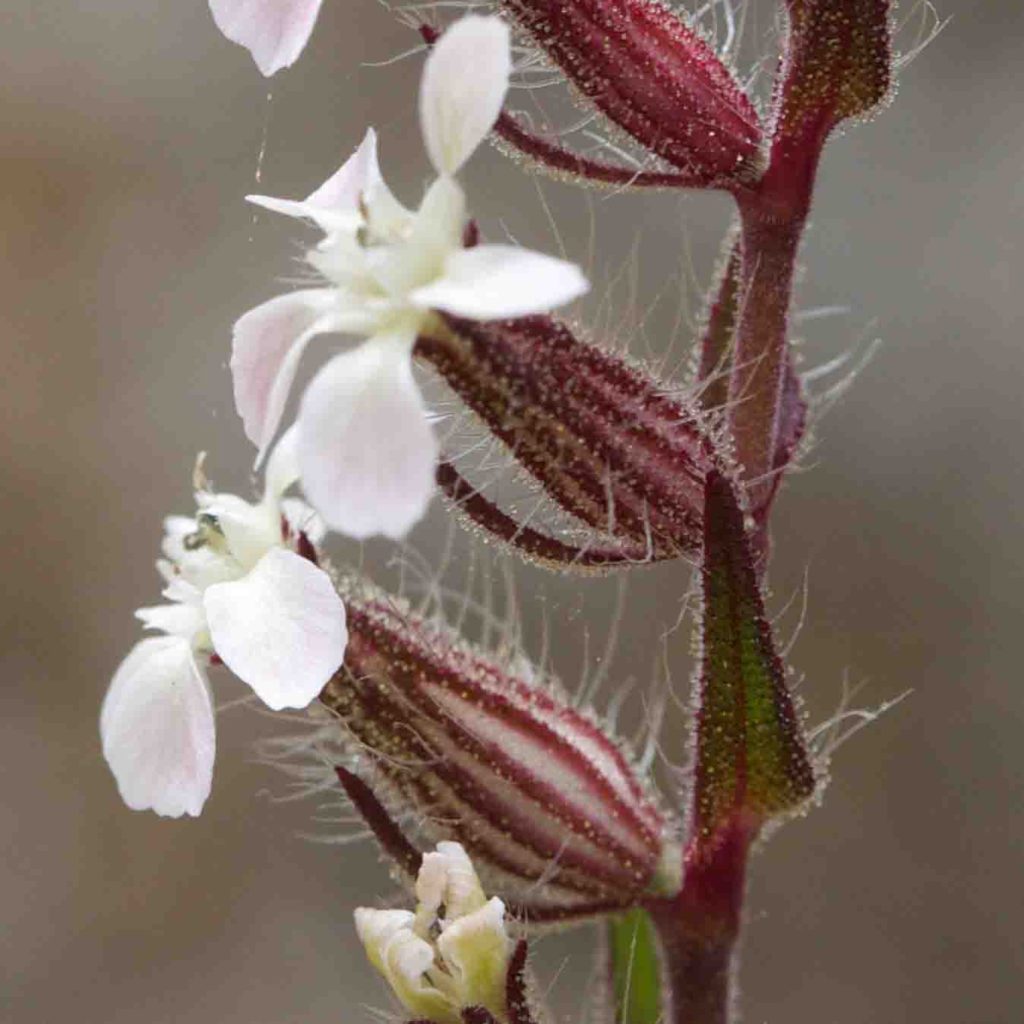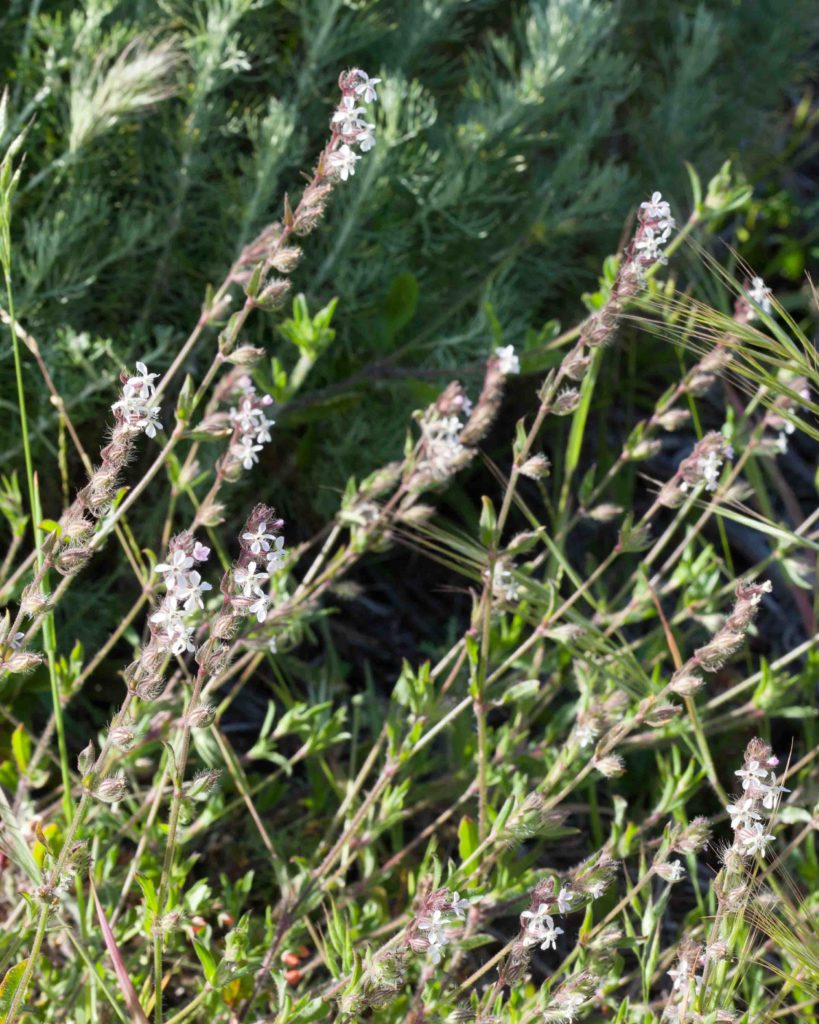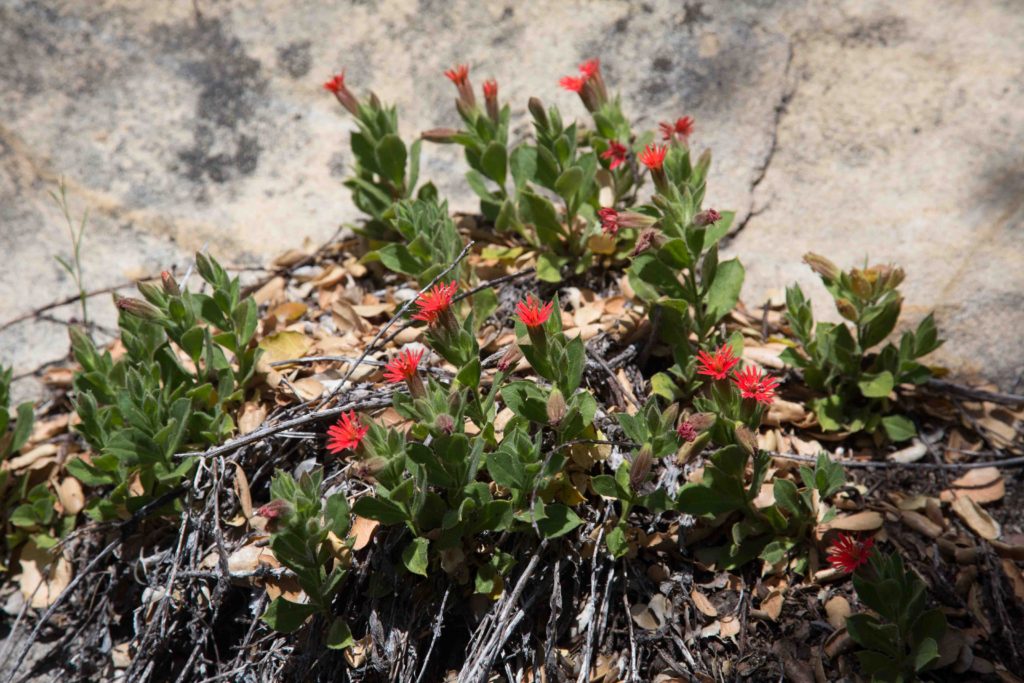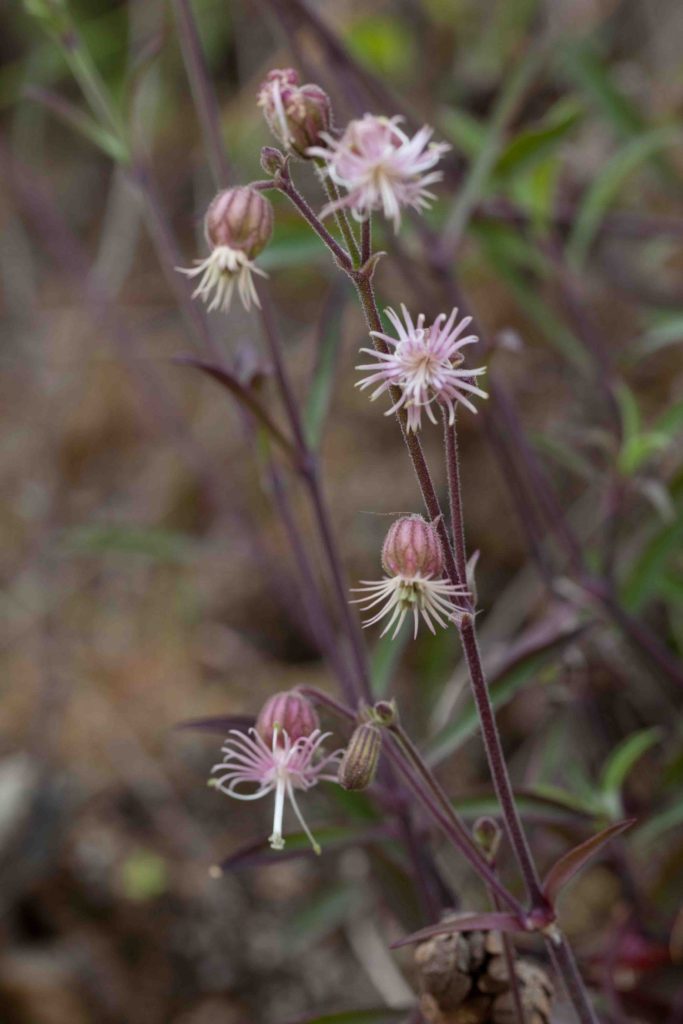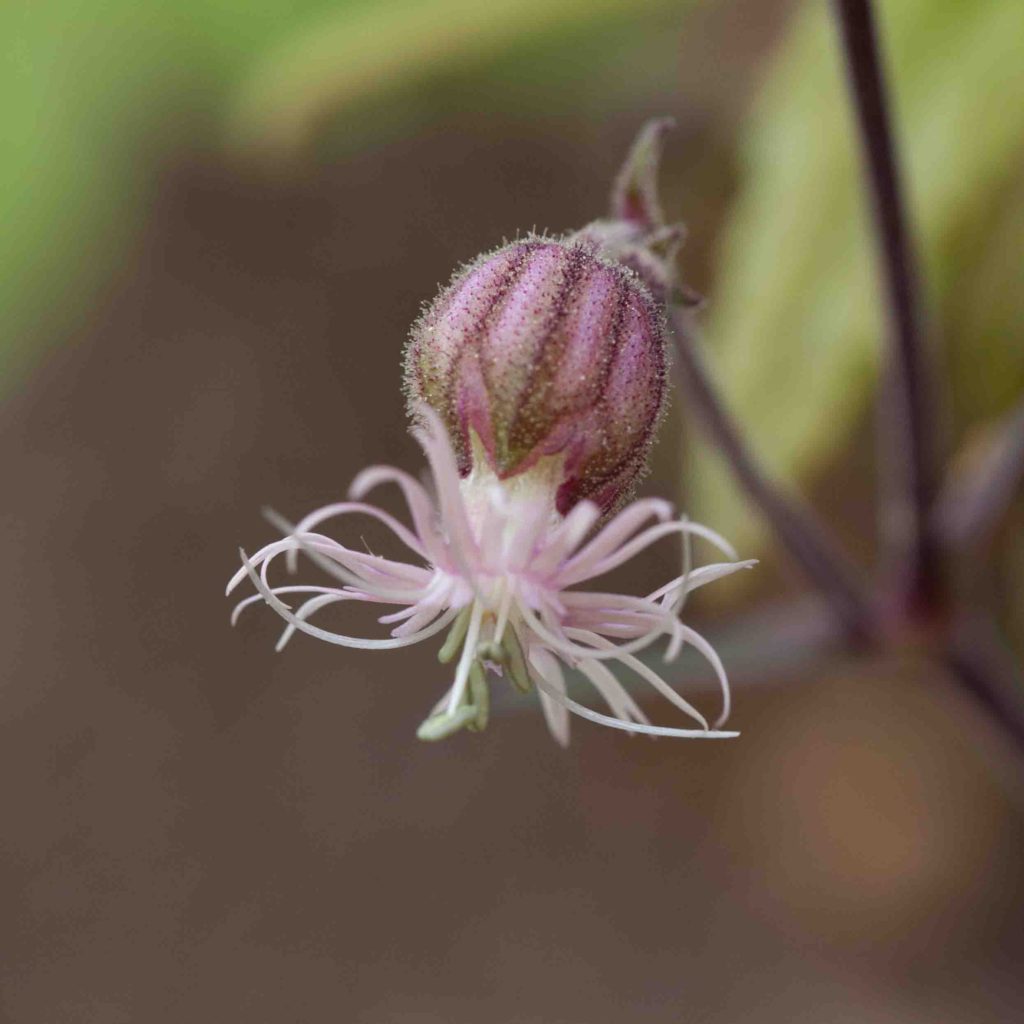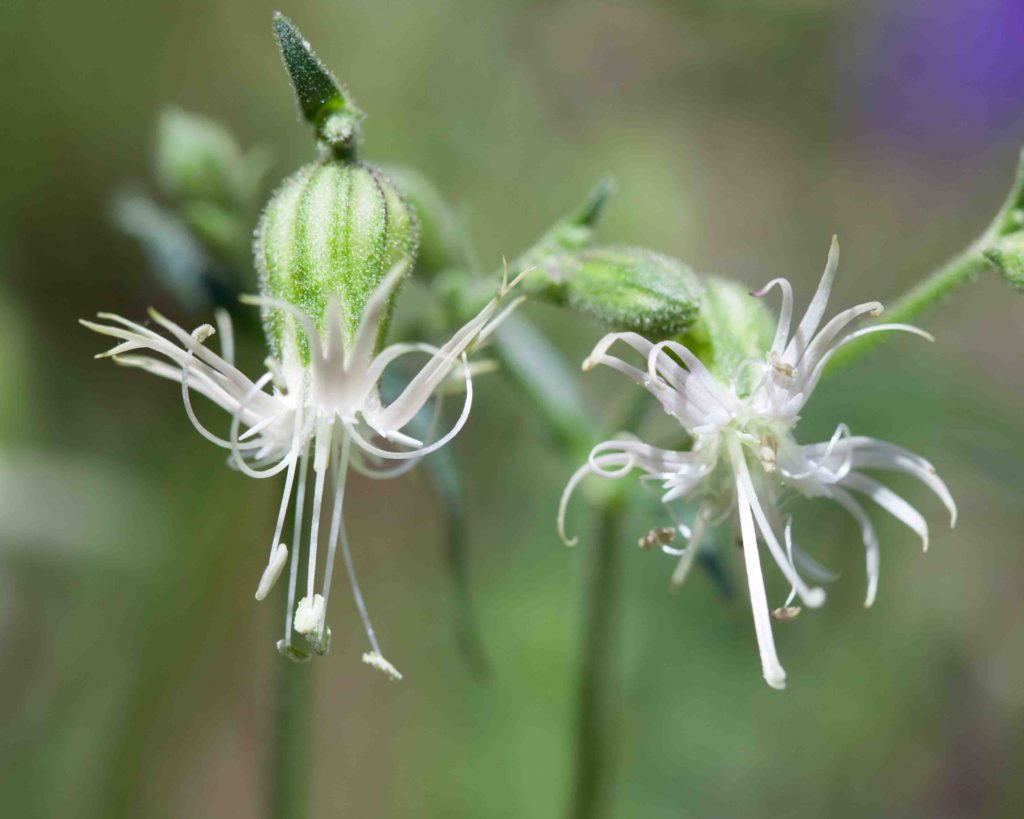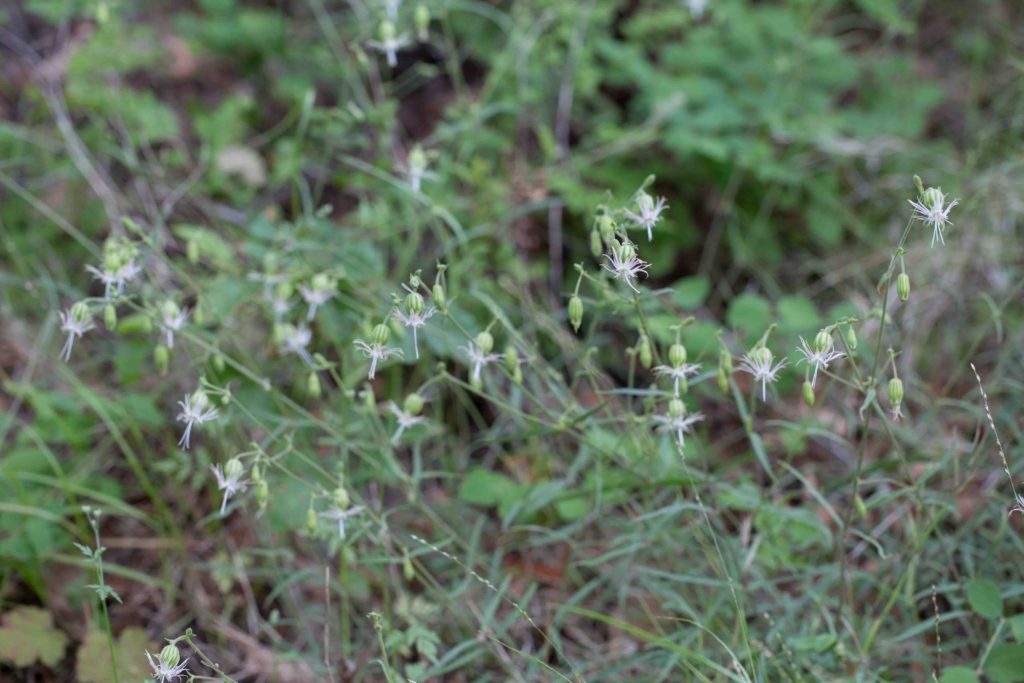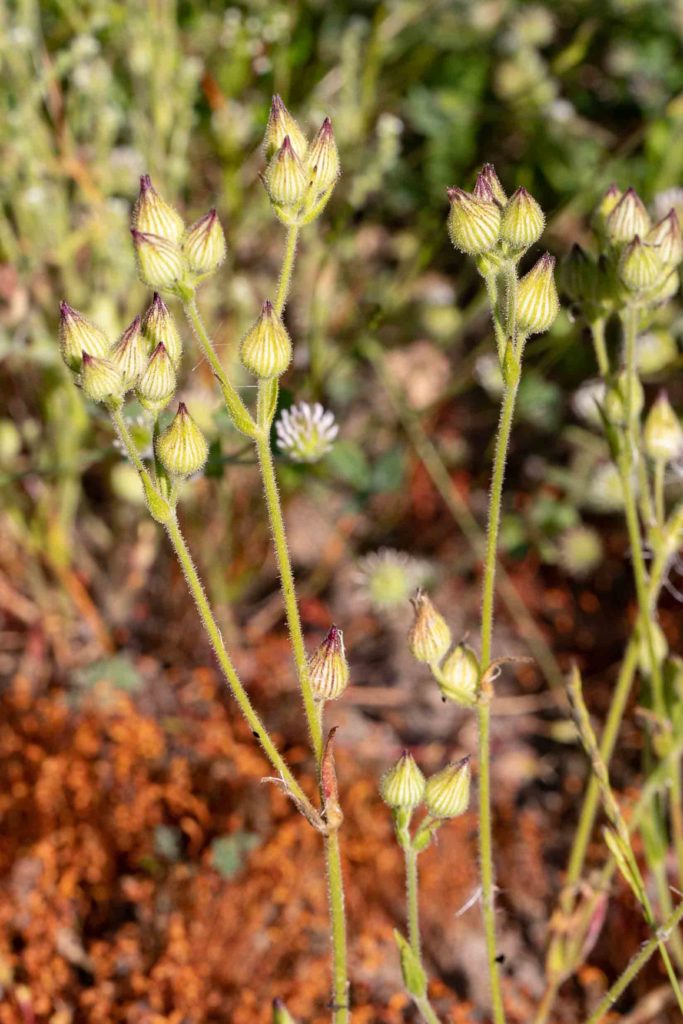Caryophyllaceae: Pink Family — Catchfly & Pink
In the Pink family, leaves are generally opposite on swollen nodes. Most genera have smallish, regular, 5-petaled and 5-sepaled flowers. Silene (Catchfly or Campion) has larger, more striking flowers. A few genera, such Herniaria (Rupturewort) and Cardionema (Sandmat), have petal-like sepals, but lack true petals.
Hairy Pink – Petrorhagia dubia
Blooms:
April–May
Plant Height:
10–60 cm
Flower Size:
Medium
Origin:
Mediterranean
Habitat:
Disturbed areas, roadsides
Notes:
This plant provides dramatic spots of color, seemingly hovering in the air. Each flower is at the tip of a long, slender stem, with 5 heart-shaped petals and a fusiform (narrowing at both ends) tube. The petals have distinctive darker veining. Subtending bracts narrow to a short acute tip. Leaves are opposite, linear to oblong. Photo #3 by CJH.
Windmill Pink / Catchfly – Silene gallica
Blooms:
Apr–June
Plant Height:
10–40 cm
Flower Size:
Small
Origin:
Europe
Habitat:
Grassy and disturbed areas
Notes:
Common and easily recognized by its one-sided inflorescence, which has a long row of whitish-pink flowers. The flowers have 5 angled petals, twisted at an angle suggesting tiny windmills. Like other members of its genus, it has a bladder-shaped calyx, glandular-hairy with 10 purplish-striped veins. Insects can get stuck on the sticky hairs – hence the alternative common name. Photo #3 by CJH.
Indian Pink – Silene laciniata subsp. californica
Blooms:
Apr–July
Plant Height:
15–30 cm
Flower Size:
Large
Origin:
Native
Habitat:
Oak woodlands, chaparral and coniferous forest
Notes:
A low-growing plant with prostrate to decumbent stems and erect, bright red flowers. These are very distinctive, with their 5 petals divided into 4-6 narrow lobes. Each petal has 2 small appendages at its base. Leaves are broadly lanceolate to ovate, reducing in size towards the top of the stem. There are records of a related subspecies (subsp. laciniata) in the county, although this is usually found further south. This subspecies (right hand photo) has linear to narrowly lanceolate leaves, a narrower calyx and a taller, more open growth habit.
Lemmon’s Catchfly / Campion – Silene lemmonii
Blooms:
May–July
Plant Height:
15–45 cm
Flower Size:
Medium
Origin:
Native
Habitat:
Open to partly-shaded woodland
Notes:
Like Indian Pink (Silene laciniata, see above), this catchfly is distinctive, with its finely dissected petals divided into 4 linear lobes. The flowers are nodding, and may be either white (with a greenish bladder-shaped calyx) or pink (with pink-tinged veins on its calyx). The calyx has 10 veins. The exserted stamens are at least as long as the petals. The 3 styles are even longer.
Many-nerved Catchfly – Silene multinervia
Blooms:
Apr–May
Plant Height:
20–65 cm
Flower Size:
Small
Origin:
Asia
Habitat:
Open areas, burns
Notes:
This is a slender, erect plant, glandular-short-hairy. It has a distinctive cone-shaped calyx. The flowers are very small (1–3 mm), white to pale pink. It seems that the plant is much more often seen in bud or fruit than in flower.
